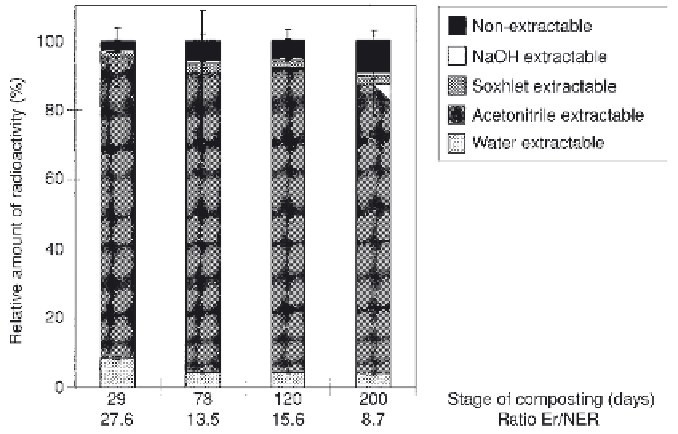Agriculture Reference
In-Depth Information
Fig. 3.6.2.
Relative distribution of [
14
C]DEHP-radioactivity amongst different extracts of compost
material during various stages of composting. Er = extractable radioactivity; NER = non-extractable
residues.
The data of the [
14
C]DEHP analysis showed strong estimated devia-
tions demonstrated with error bars. This is typical for [
14
C]DEHP analysis
and was mentioned by Förstner and van Raaji (1996) who performed
similar composting experiments. The deviations are not attributed to
analytical errors, but are probably due to a heterogeneous distribution of
DEHP in the sample material.
The ratio of extractable radioactivity (Er) and NERs decreased with
time, making a release of NERs very unlikely. However, ratios were
calculated using mean values. Considering the strong deviations, no clear
prediction about the potential release of NERs can be made. In view of the
low percentage of NER, only small amounts of applied [
14
C]DEHP could
be released.
[
14
C]Pyrene
As shown in Fig. 3.6.3, the water-extractable fraction of applied
14
C-radio-
activity was small and an identification by HPLC analysis was not possible.
However, the presence of polar metabolites is very likely (Hartlieb and
Kördel, 2000). In relation to the initial content of
14
C-radioactivity, the
water-extractable radioactivity did not exceed 5% during the experiment.
Solvent-extractable
14
C-radioactivity was identified by means of HPLC
analysis as pyrene. During the thermophilic phase, ~12% of the initial
























































































Search WWH ::

Custom Search